The first step in eliminating mosquitoes is to find out where they are.
So, where do mosquitoes live?
The short answer:
Mosquito larvae live in pools of non-moving water. They only need approximately 1 tsp of water to develop.
Adult mosquitoes prefer to live outside near vegetation such as tall grass and trees.
However, this answer barely scratches the surface.
In this article, we will go over exactly where mosquitoes live in your home.
Let’s dive in!
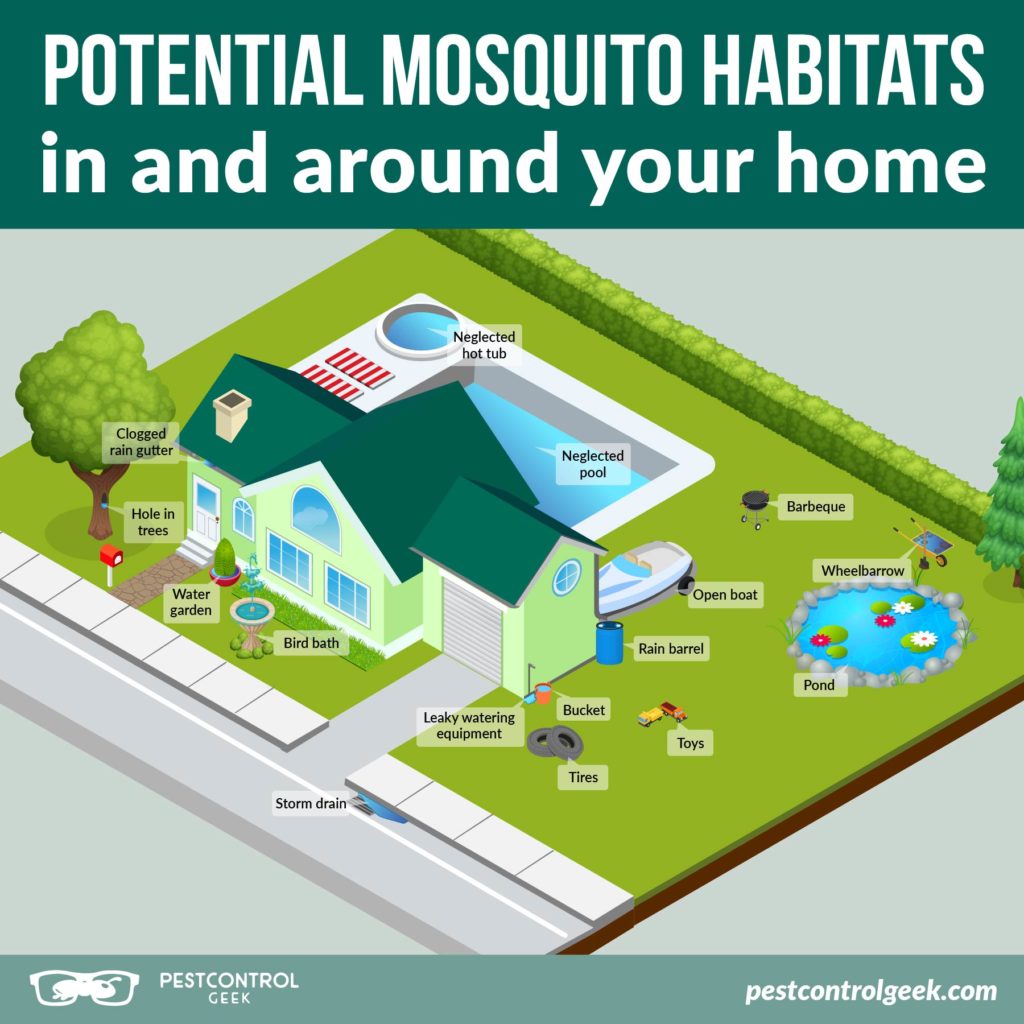
Air Conditioner Drainage
There are two potential sources of moisture that an air conditioner can cause.
The first is inside your home.
A drip pan is placed under your air conditioner unit to catch any excess moisture or overflows from the system.
The drip pan is typically connected to a drip line that drains any water that accumulates any water in the drip pan.
To avoid stagnant water build-up, make sure your drip pan is leveled and the drain is clear of any debris to make sure all the water is draining.
The other source of water build-up is at the end of the drip line.
Often times drip lines are routed outdoors.
There are a few things you can do to avoid stagnant water build-up at the end of your drip line.
The first is to connect your drip line directly to an indoor drainage pipe.
This will eliminate any potential source of water build-up outdoors.
Another option is to direct your drip line towards an outdoor drain. This will ensure that all water released from the drip line reaches a drain pipe quickly and efficiently.
Storm Drains
Storm drains can be a major source of standing water and a place for mosquitos to live.
While drainage systems help eliminate water run-off, they can create a perfect habitat for mosquitos.
There are two sources of stagnant water that attracts mosquitos.
The first are catch basins. Catch basins are the drainage systems that water from gutters directly drains into.
The second is in corrugated drainage systems. These pipes can cause small amounts of water to remained trapped throughout the drainage system.
The best way to avoid mosquitos is to redesign your drainage system.
In situations like this, using a catch basin with a low fill point is ideal.
It’s also good to swap out corrugated tubing for PVC pipe. Always make sure your drainage pipes don’t have any flat areas; this will cause water to build up inside the pipes.
If redesigning your drainage system is not feasibly using an insecticide combined with mesh filters to prevent entry by mosquitos.
You can apply mosquito dunks to your catch basin.
Mosquito dunks are insecticide that you place in water that will attack any mosquito larva in the water.
As more water run-off enters the catch basin, it will distribute to any water inside drainage pipes.
It is also highly recommended that you apply mesh filters over your catch basin to prevent mosquitoes from entering.
Water Under House
If you have a home with a crawlspace, water can pool under your home.
This is dangerous because it can often go unnoticed.
The most common reasons that water builds up under houses are:
- Missing or broken downpipes.
- Missing drainage on downpipes.
- Flower beds near the foundation
- Leaky pipes or water hose.
It is important to address drainage issues around the foundation and under your home to prevent stagnant water pooling.
Water under your foundation can also cause issues with foundation stability and mold
Tall Grass and Bushes
Adults mosquitos do not live or roam around sources of water unless they are breeding.
When they are not breeding, mosquitos typically hide in tall grass, or among bushes.
They seek out shaded areas with moisture to survive, and tall grass provides precisely that.
You can often find mosquitos by disturbing tall grass around your home.
Keep your grass maintained and spray insecticide on tress on bushes to eliminate other hiding spots.
Tree Hole
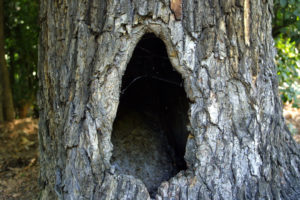
Some tree holes collect water, which makes them an ideal nesting site for mosquitoes.
That doesn’t mean, however, that you should fill every tree hole.
Tree holes that do pool water play an essential role in our ecosystem by providing birds and other wildlife nesting sites.
If you have a tree hole in your home, determine if it holds water.
You can seal tree holes that hold water with expanding water-resistant foam.
While some water can still seep in through the foam, sealing tree holes with foam is still highly effective at preventing mosquitoes from laying eggs in them.
Do not fill tree holes with concrete as it can damage the tree by adding weight to it.
You’ll also do not want to drill drain holes in the tree, as this can damage it as well.
Finally, do not fill the tree holes with concrete, gravel, or sand. These materials do not prevent water from pooling in the hole.
Gravel and concrete also pose a safety hazard for arborists if the tree has to be cut down. They also add weight to the tree, causing damage to it over time.
Boat
Boats contain many compartments that can pool water.
To prevent mosquitoes from aggregating on your boat, ensure to empty all collected water when possible.
If there is water that you are unable to remove, you can treat it with BTI products. Another great way to prevent mosquitoes from infesting your boat is to cover it with a tarp or a shrink wrap.
Overwatering
Overwatering of lawns can pool enough standing water for mosquitoes to lay eggs.
Inefficient watering is especially common in dry years when people tend to water more.
But when homeowners overwater their yards or gardens, they tend to create pockets of dirty water that’s ideal for mosquitoes to thrive.
Look for puddles around your yard. If you find small pockets of water, but there hasn’t been raining, chances are you’re overwatering.
To avoid this, water your yard and plants only as often as is needed to maintain proper soil moisture.
Clogged Gutter
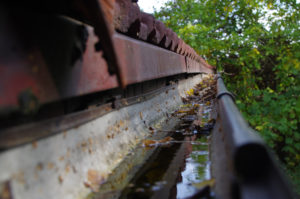
Fallen leaves and twigs can travel into your downspouts and gutter. This debris can eventually clog up your downspouts and gutter and cause standing water to accumulate.
Unfortunately, this water pool can become the perfect nesting ground for mosquitoes and other common household pests.
To prevent this, ensure to keep your gutters clean, especially when the weather gets warm.
A clogged gutter and warm temperature create the perfect environment for mosquitoes.
As such, cleaning your gutters during this season is a great way to prevent your home from becoming a breeding ground.
Bird Bath
Standing water on birdbaths is another ideal play for mosquitoes to lay their eggs and grow their larvae.
There are a few easy ways you can prevent bird baths from becoming a mosquito breeding ground in your home.
The first is to empty and replace your water every three days.
Because it generally takes mosquitoes a minimum of four days to complete a life cycle, emptying standing water will prevent them from developing into full adults.
To avoid wasting water, recycle the old birdbath water by using it to water your garden plants.
You can also treat the water with an insecticide that’s fatal to mosquitoes but is not harmful to birds or other wildlife.
Finally, you can add a water agitator into your birdbath to make it unideal for mosquitoes to inhabit.
That’s because mosquitoes need to breathe air through the surface of the water. They are very susceptible to wave action.
To keep water from standing, you can install a Water Wiggler or a small waterfall feature. Not only is this beneficial to keeping mosquitoes away, but it also produces sounds that attract birds to your birdbath.
Water gardens
While water gardens are susceptible to mosquito infestation, you wouldn’t want to remove them by adding toxic chemical solutions.
Water gardens have a delicate ecosystem that needs to be considered before treatment.
To get rid of mosquitoes, I recommend using natural biocontrols such as BTI.
BTI is a naturally occurring bacterium found in soils.
These pathogens produce toxins that specifically target larvae mosquitoes.
BTI is excellent for places where water cannot be emptied, such as fountains, irrigation ditches, and water gardens.
It comes in many forms, including pellets, granules, tablets, and liquid.
BTI presents no toxicity to people, crops, bees, and animals.
When used as directed, BTI can be applied safely without harming crops or water supplies.
Many BTI products are designed specifically for homeowners and are safe and easy to use.
While some commercial use BTI products may require you to wear a mask when applying, most require no extra precautions.
Rain Barrels
While rain barrels are useful for capturing rainwater, they create the perfect mosquitoes area to lay their eggs.
There are a few things you can do to keep mosquitoes away from your rain barrel.
The first and easiest is to have your rain barrel covers with a screen or a lid.
You can cover your barrel with a fine mesh, wire screen to keep mosquitoes away.
Another thing you can do is to empty your barrels regularly. I recommend doing it every three to four days.
It generally takes mosquitoes a minimum of four days to complete a life cycle, so emptying standing water before this will prevent them from developing into full adults.
Finally, you can purchase BTI and place it inside your barrel.
BTI is a naturally occurring bacterium that specifically targets larvae mosquitoes.
While it presents no toxicity to people, crops, bees, and animals, it is fatal to mosquitoes.
It is excellent for places where water cannot be regularly emptied.
BTI comes in many forms, including pellets, granules, tablets, and liquid.
Many BTI products are designed specifically for homeowners and are safe and easy to use.
Leaky Watering Equipment
Leaking outdoor faucets can gradually form a small standing water pool where mosquitoes can lay their eggs and grow their larvae.
Not only that, but leaky faucets also tend to attract other unwanted household pests such as cockroaches, termites, and ants.
To prevent these pests from infesting your home, make sure that you fix any plumbing issues and leaky faucets.
Fixing water leaks is especially important during the summer months, where mosquitoes are prevalent.
Toys
Toys such as sandboxes, portable basketball hoops, and kiddie pools can pool standing water where mosquitoes can breed.
To prevent mosquitoes from harboring in toys, make sure to store them properly.
Empty in kiddie pools every four days or store it indoors. You can also turn it over when not in use to prevent standing water from accumulating.
If you have sandboxes in your home, I recommend drilling holes in the bottom of your sandbox to allow water to leak out.
Water can seep in and accumulate in some sandboxes, whether it’s covered or not.
If you have playhouses that pool water, make sure to empty it every three to four days. You can also turn it over or place it inside your home to protect from rainfall.
Dump water in any deflated toys such as bounce houses and kiddie pool. You can also place these toys in a container and inside your home.
Old Tires
Tires are a notorious breeding ground for mosquitoes.
They can easily collect standing water where mosquitoes can lay their eggs.
Tires can also become filled with microorganisms and floating organic matter that the mosquito larvae can eat.
Finally, rubber tires help provide insulation for mosquito eggs, making them the perfect nest.
To prevent mosquito infestation, recycle old tires.
For this, you can contact a recycling service specializing in tires or ask your local council to help you properly dispose of them.
You can also drill holes in old tires to allow for water drainage. However, this method may still allow some water to accumulate.
For extra protection, store unused tires indoors or place them in sealed containers.
Tarp
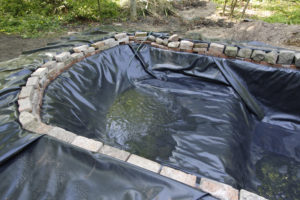
While tarps help protect equipment from rain damage, they also create the perfect place for mosquitoes to lat their eggs.
In most cases, you can prevent this by making sure that the tarp is snug. Loose tarp covers create pockets of water that allow water to accumulate.
Tarps on boats and pools can collect pockets of water when they are not fitted tightly. These small water pools can be a perfect breeding ground for mosquitoes, especially in the summer months.
Siphoning is an easy and quick way to remove water from pool covers.
To remove water, you can either suck on the hose or start to get the siphon to start itself.
To get the siphon to start by itself, submerge one end of the hose in the collected water on the cover and swing the other end quickly towards the ground. The momentum of the swing should be enough to start the siphon.
You can also use a pump to remove the water on the pool cover.
Note, however, that while using a pump can be highly effective, it tends to be an expensive method since you have to purchase the specially designed pump.
To prevent water from collecting on your boat cover, make sure to get a proper boat cover support system. Non-fitted tarps can move with the wind and the waves and create small pockets where water can pool.
To prevent water from pooling, you can have a professional install a boat cover support system or purchase a self-install kit.
Buckets, Garbage Cans, Recycling Bins
Buckets are notorious for creating mosquito breeding grounds.
To keep mosquitoes away, make sure to drain water from buckets. You’ll also want to turn them over to prevent water from accumulating.
Garbage cans and recycling bins can also hold standing water. To prevent water from pooling, you can drill a drainage hole and keep them covered.
Hot Tub Mosquitoes
Standing water in hot tubs is another notorious place for mosquitoes to breed.
To keep mosquitoes away from your hot tub and home, make sure to keep it covered.
If the hot tub is neglected, consider removing it from your property. The less clutter you have, the less places mosquitoes can breed.
Neglected Pools
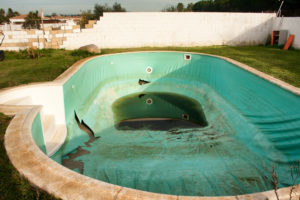
A neglected pool not only provides stagnant water for mosquitoes to lay their eggs, but it also allows for bacterial growth that feeds mosquito larvae.
To keep mosquitoes away, make sure to restore your pool’s filtration system and apply chemical treatments to remove any accumulated algae and bacteria.
You may also consider draining the pool entirely to and covering it to make sure it doesn’t become a breeding ground for mosquitoes.
Remember to consult with a pool maintenance company before draining a pool ultimately to ensure that high groundwater levels will not force the pool pop out of the ground.
You can also treat the pool water with mosquito insecticide.
Ponds
Stagnant water on ponds is an ideal place for mosquitoes to lay their eggs.
There are a few ways you can prevent this.
The first is to agitate the water by adding an electric aeration pump or a fountain.
Mosquitoes need to breathe air through the surface of the water and are very susceptible to wave action.
As such, by increasing the aeration in the pond, you will make it impossible for mosquitoes to survive in it.
Another thing you can do is to clean your pond regularly. Mosquito larvae feed on microorganisms and floating organic matter. So, by removing thick layers of algae in your pond, you’ll eliminate their food supply.
Another thing you can consider is bio-control.
For this, you can add fish in your pond that is mosquito predators.
Some of the most popular ones are Mosquito fish, Guppies, and Threespine stickleback.
Western Mosquitofish or Gambusia specializes in consuming mosquito larvae.
These fish are tiny, enabling them to thrive in shallow waters where mosquito larvae live.
Another advantage of mosquito fish as a biocontrol is that they are tolerant of a wide range of environmental conditions, such as temperature and salinity.
Today they are used around the world as an alternative to using pesticides to control mosquitoes.
Finally, you can use BTI to control mosquitoes.
BTI is a naturally occurring bacterium found in soils.
These pathogens produce toxins that specifically target larvae mosquitoes.
BTI is excellent for places where water cannot be emptied, such as fountains and ornamental ponds.
While BTI is fatal to mosquitoes, it presents no toxicity to people, crops, bees, and animals.
BTI comes in many forms, including pellets, granules, tablets, and liquid.
